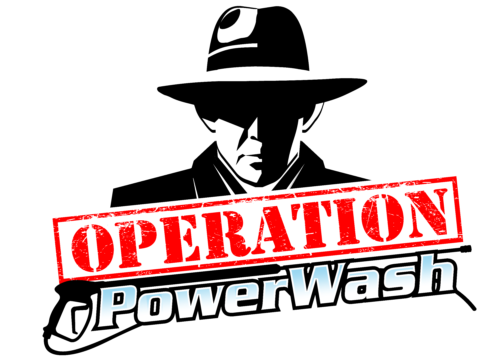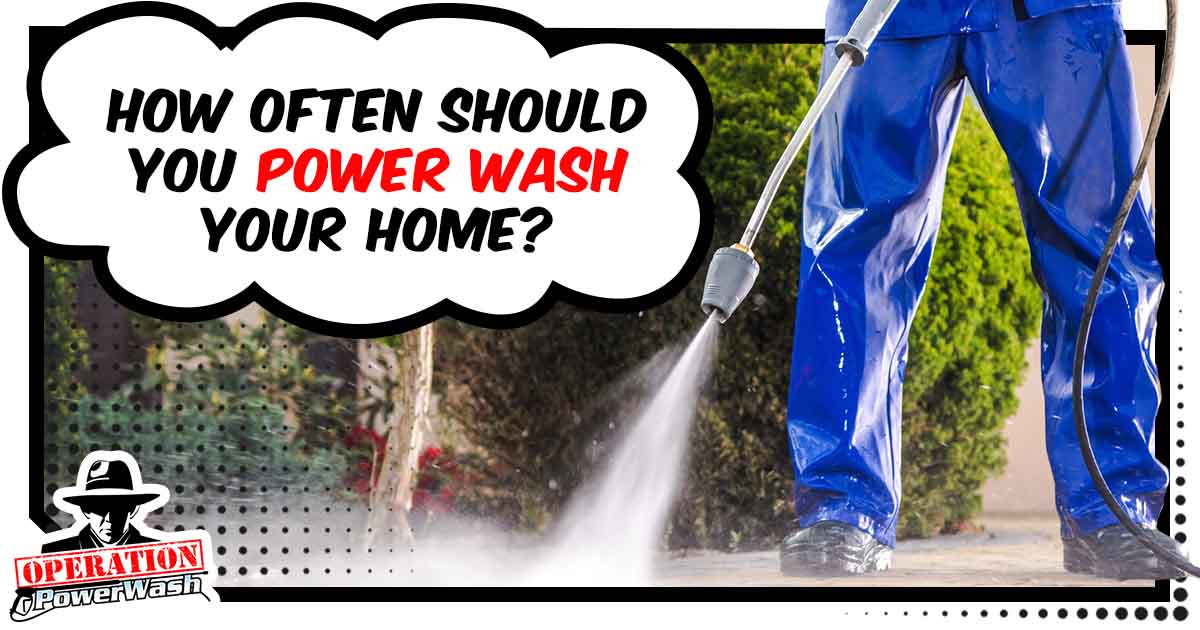Power washing is an essential part of home maintenance. Over time, dirt, mold, mildew, and other contaminants build up on exterior surfaces. Regular cleaning helps protect the home’s structure, maintain curb appeal, and prevent costly repairs. But how typically should you power wash your home? The answer depends on several factors: climate, siding material, and surrounding environment. Understanding the proper cleaning schedule ensures a home stays clean and well-maintained throughout the year.
The Importance of Power Washing Your Home
Regular power washing improves a home’s appearance. It also helps protect the property from long-term damage, preserves value, and ensures a safe living environment.
Protecting Your Home’s Exterior
Dirt, algae, and mold can weaken a home’s exterior. When unchecked, these contaminants cause staining and deterioration, leading to costly repairs. Power washing removes these harmful elements before they cause structural damage. It also prevents wood rot, corrosion on metal surfaces, and fading of paint or siding.
Enhancing Curb Appeal
A clean exterior makes a home look more inviting. Power washing removes stains, grime, and discoloration, restoring the home’s fresh and well-maintained appearance. Whether preparing to sell a property or simply keeping it in top condition, regular cleaning ensures the exterior remains visually appealing.
Maintaining Property Value
A well-maintained home retains its value better over time. Potential buyers notice a clean, well-kept exterior, which can increase market value. Routine power washing prevents the need for expensive repairs, making it a cost-effective way to preserve a home’s worth.
Factors That Determine How Often to Power Wash Your Home
The frequency of power washing depends on multiple factors. Homeowners should consider the local climate, the type of siding, the surrounding environment, and the overall maintenance routine.
Climate and Weather Conditions
Homes in humid or rainy climates are more prone to mold, mildew, and algae growth. These conditions require more frequent power washing—typically once a year or more. In drier climates, where dust and dirt accumulate instead, a home may only need cleaning every two years. Seasonal weather changes, such as heavy storms, can also affect how often a home requires washing.
Type of Siding and Exterior Material
Different exterior materials require different power washing schedules. Vinyl siding and brick collect dirt and mildew faster, requiring annual or biannual cleaning. Wood siding is more delicate and may need a lower-pressure wash to avoid damage. Stucco, which is porous, can trap dirt and stains, making regular cleaning necessary. Understanding the material ensures the proper cleaning method is used without causing damage.
Surrounding Environment
The home’s surroundings also impact how often power washing is needed. Houses near trees or in high-pollen areas collect debris, sap, and mildew more quickly. Urban homes may experience dirt buildup from pollution and traffic. Coastal homes are exposed to salt air, which can cause corrosion. These factors may require more frequent power washing to maintain the home’s condition.
Frequency of Other Maintenance
Regular home maintenance affects the need for power washing. Homes that receive routine gutter cleaning, landscaping, and exterior upkeep may require less frequent washing. However, neglecting these tasks allows grime and mold to accumulate faster, making power washing necessary more often.
Recommended Power Washing Schedule for Different Areas of Your Home
Each part of a home’s exterior accumulates dirt and grime at different rates. Following a proper cleaning schedule for each area ensures the house stays in good condition.
Siding and Exterior Walls
Most homes benefit from power washing the siding at least once a year. Homes in humid climates or near busy roads may require cleaning every six months to prevent mold, mildew, and pollution buildup. Using the correct pressure setting based on the siding material is essential to avoid damage.
Driveways and Walkways
Driveways and walkways accumulate oil stains, dirt, and algae, creating safety hazards. Cleaning these surfaces at least once a year helps prevent slippery conditions and maintains their appearance. High-traffic areas, especially in regions with heavy rainfall or snowfall, may require more frequent washing.
Decks, Patios, and Fences
Wooden decks and fences should be power washed yearly to remove dirt and mildew. For composite or stone patios, cleaning every six months may be necessary to prevent staining. The correct pressure setting is essential to avoid damage, especially on wood and softer materials.
Roof and Gutters
While not all roofs require power washing, low-pressure soft washing removes moss, algae, and dirt. Depending on climate conditions, roofs should typically be cleaned every one to three years. Gutters should be cleared at least twice yearly to prevent clogs and water damage.
Signs That Indicate It’s Time to Power Wash Your Home
Even with a regular cleaning schedule, sure signs indicate when a home needs power washing sooner. Ignoring these warning signs can lead to damage and costly repairs.
Visible Dirt, Stains, or Mold Growth
If siding, driveways, or other exterior surfaces appear discolored or stained, it’s time to schedule a power wash. Mold, mildew, and algae can spread quickly, especially in shaded or damp areas. Regular cleaning prevents these contaminants from causing long-term damage.
Slippery or Discoloured Surfaces
Algae, moss, and dirt buildup create slippery walkways, patios, and decks. If surfaces feel slick or have visible patches of green or black, power washing is needed to restore safety and prevent accidents.
Preparing for Seasonal Changes or Special Events
Before winter, power washing removes dirt and debris that could lead to damage during freezing temperatures. In spring, cleaning gets rid of pollen and mold from wet conditions. Homeowners may also schedule power washing before selling a property or hosting outdoor events to enhance curb appeal.
Professional vs. DIY Power Washing – Which Is Best?
Homeowners may power wash their homes themselves or hire a professional service. While DIY power washing can be effective for small tasks, professional services provide better results and reduce the risk of damage.
Advantages of Hiring a Professional Service
Professional power washing companies use commercial-grade equipment and the correct cleaning solutions for different surfaces. They ensure proper pressure settings to prevent damage and complete the job efficiently. Hiring experts also saves time and effort, especially for large homes or areas requiring delicate cleaning methods.
When DIY Power Washing Might Be Sufficient
Homeowners may use a personal power washer for minor cleaning tasks, such as washing a small patio or driveway. This method works well for routine maintenance if the correct pressure settings and cleaning solutions are used. However, larger surfaces or areas with heavy grime may require professional assistance.
Common Mistakes to Avoid with DIY Power Washing
If done incorrectly, DIY power washing can cause damage. Using too much pressure can crack siding, chip paint, or splinter wood. Failing to use the correct cleaning solutions may leave streaks or fail to remove stains. Homeowners should also avoid spraying water under siding or shingles, as this can cause water damage.
Get Expert Power Washing Services Today
Regular power washing keeps a home looking clean and well-maintained. Professional services ensure safe and effective cleaning for all exterior surfaces. Contact Operation PowerWash today at 972-800-3982 to schedule a professional residential power washing service.


